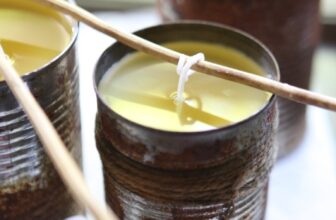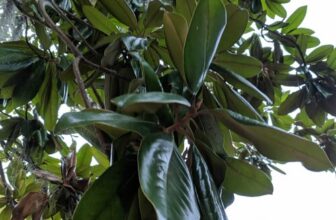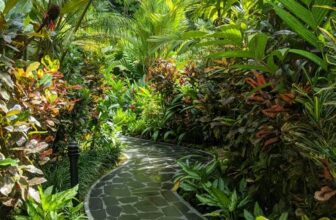Happy Monday, GPODers!
Today we’re returning to Wayne, Pennsylvania, to Wendy Quereau’s stunning garden. It has been a little while since we’ve gotten an update on Wendy’s diverse designs, but we’ve enjoyed scenes from her beds and borders several times over the years, and there is always something new to admire (check out some of her previous submissions for a refresher: Beauty from Wendy’s Garden, Wendy’s Pennsylvania Garden, A Garden Full of Favorites, Still Gardening, and more). She’s back to share how her nearly 50-year-old garden continues to evolve and grow.
Many of you have seen my garden of 47 years before. There were only a few large deciduous trees here when we started trying to create a pleasure garden from masses of weeds and poison ivy.
A mature garden like mine presents its own problems. Namely, some plants need to be replaced from decline, and it is necessary to prune, edit here and there, and then prune some more. On the bright side, I well remember impatiently waiting for all the tiny plants to grow, feeling like it would never fill in. Before you know it, you’re part of a jungle-like atmosphere—especially if self-control in garden centers eludes you.
My garden is on one overplanted acre, which contains both sun and shade. Now, in August, my little woodland has gone quiet, and I rely on sun perennials to provide a bit of pizazz to see me through until the blaze of fall color arrives. I always keep low maintenance in mind as I move toward adding shrubs for color and texture to replace the work of perennial and annual flowers.
I have help three days a year. That professional work includes spring cleanup, edging and mulching, summer pruning of shrubs and trees, and carting away masses of leaves in the fall. There are far too many leaves to shred and replace back into the beds. Sacrifices which defy cultural recommendations must be made to be able to continue caring for my garden on my own as I approach age 80. Yikes!
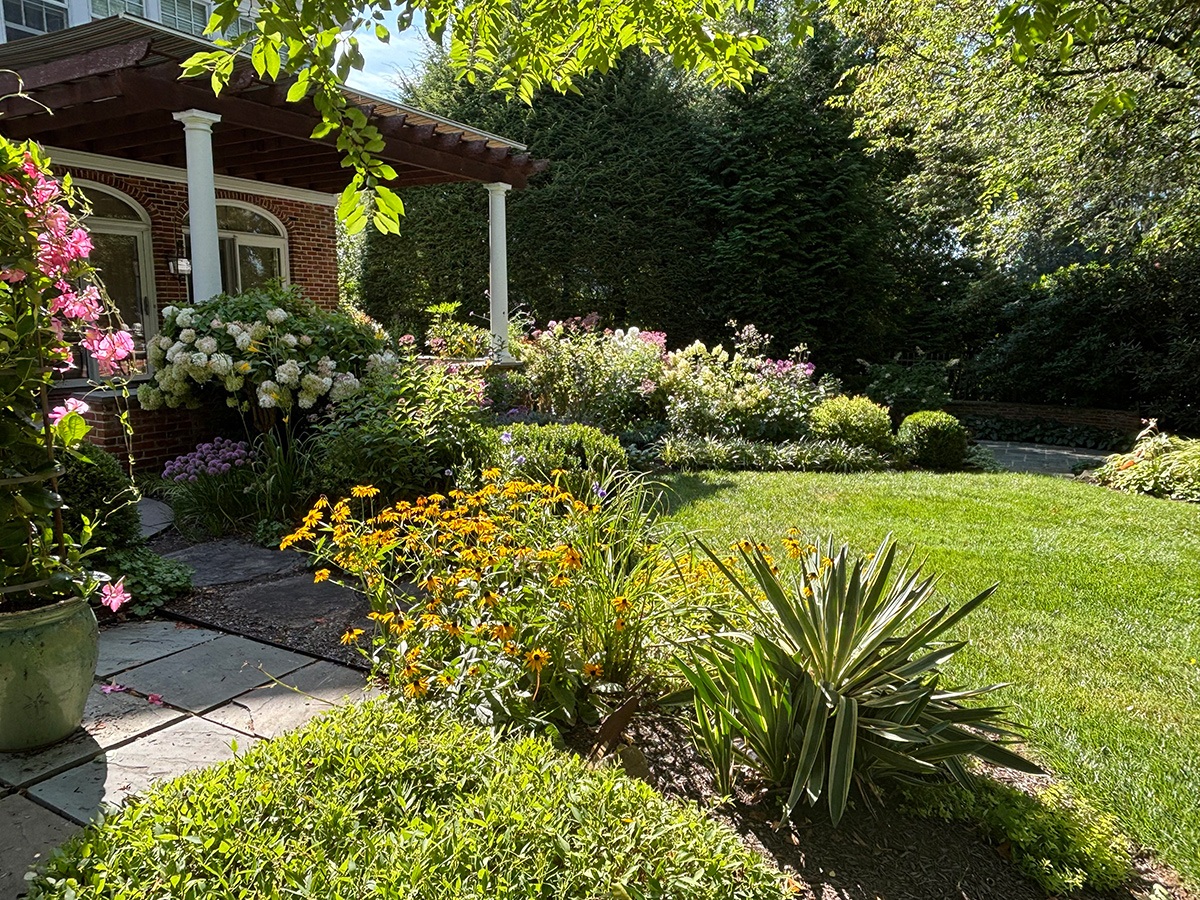 West-facing perennial garden against patio wall: The attempt is to provide interest in all seasons.
West-facing perennial garden against patio wall: The attempt is to provide interest in all seasons.
 ‘Pinky Winky’ panicle hydrangea (Hydrangea paniculata ‘DVP PINKY’, Zones 3–9) in a frost-free container. It softens the expanse of the bluestone patio floor with little work involved. I cut back all its branches to 12 inches in early March. The shrub is 10 years old with no hardiness issues. Mulch, fertilizer, and keep well-watered. Sun and shade mix here.
‘Pinky Winky’ panicle hydrangea (Hydrangea paniculata ‘DVP PINKY’, Zones 3–9) in a frost-free container. It softens the expanse of the bluestone patio floor with little work involved. I cut back all its branches to 12 inches in early March. The shrub is 10 years old with no hardiness issues. Mulch, fertilizer, and keep well-watered. Sun and shade mix here.
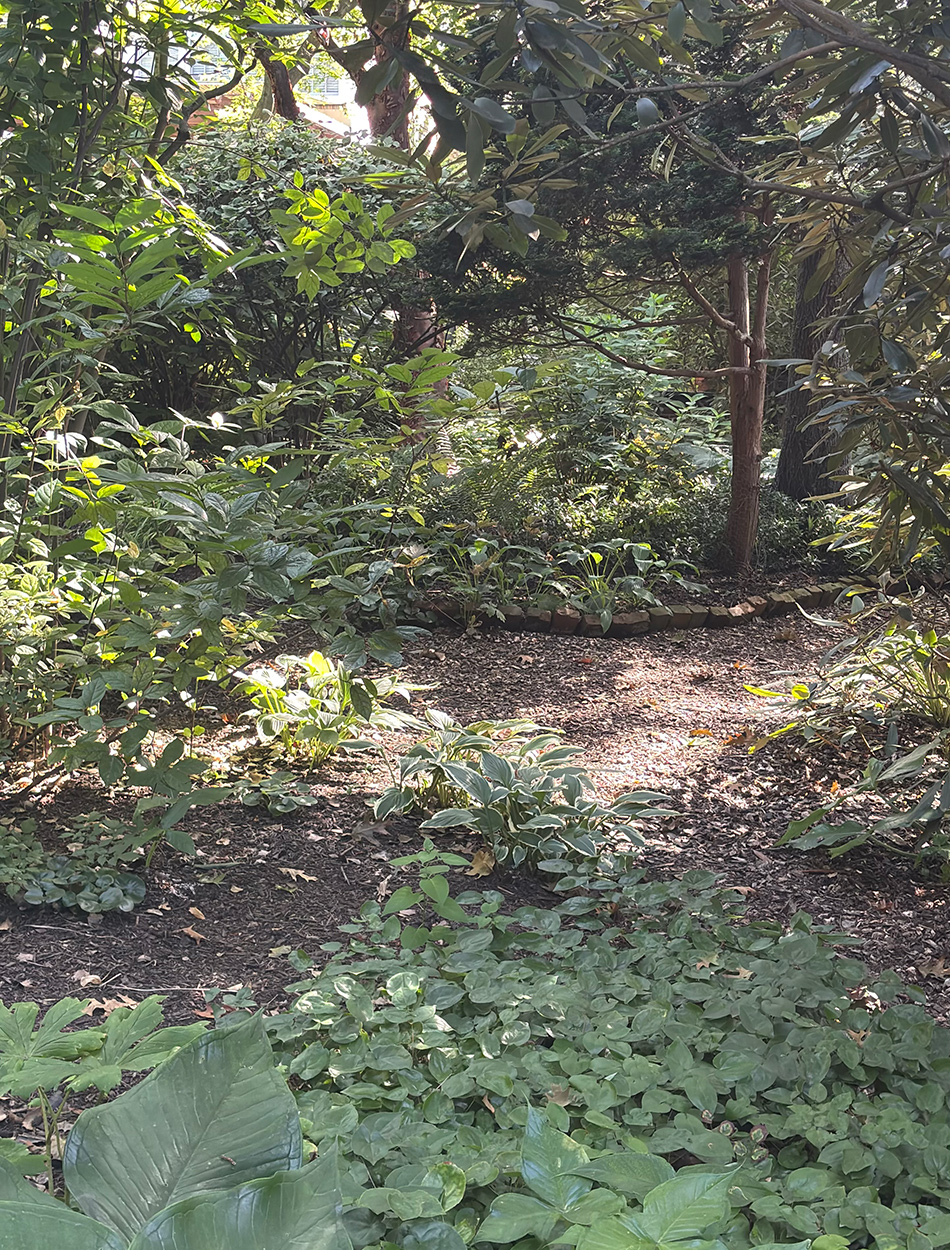 This circuitous woodland path shines in April, when drifts of wildflowers are in full bloom. Morphs into a sea of green in summer.
This circuitous woodland path shines in April, when drifts of wildflowers are in full bloom. Morphs into a sea of green in summer.
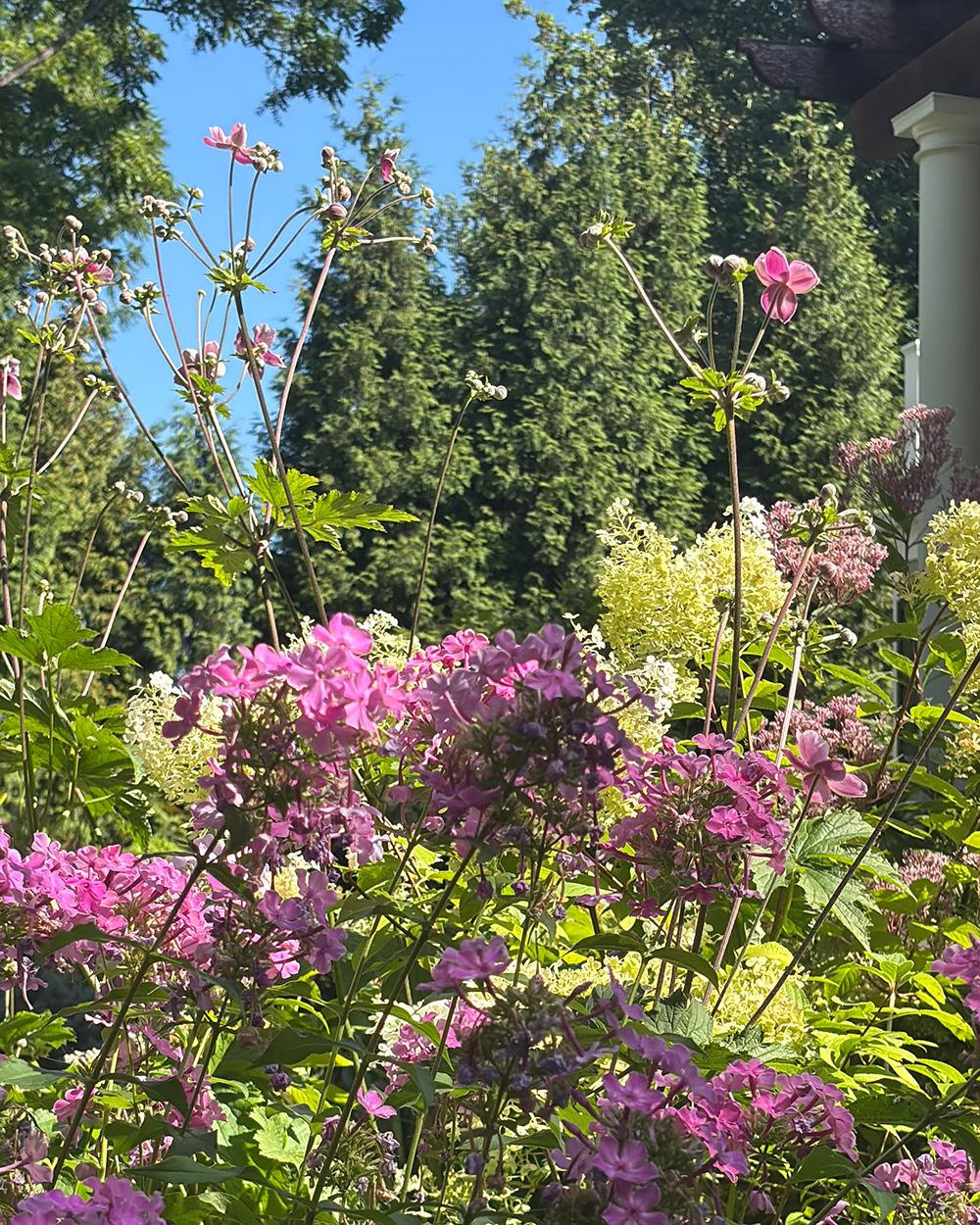 This part of my perennial garden is encouraged to intermingle for a less structured appearance. Here, ‘Bobo’ panicle hydrangea (H. paniculata ‘ILVOBO’, Zones 3–9), pink phlox, and anemone mix together. Not shown, but another good player in this combo is ‘ Little Joe’ Joe Pye weed (Eutrochium dubium ‘Little Joe’, Zones 3–9), which stays at 5 feet in height.
This part of my perennial garden is encouraged to intermingle for a less structured appearance. Here, ‘Bobo’ panicle hydrangea (H. paniculata ‘ILVOBO’, Zones 3–9), pink phlox, and anemone mix together. Not shown, but another good player in this combo is ‘ Little Joe’ Joe Pye weed (Eutrochium dubium ‘Little Joe’, Zones 3–9), which stays at 5 feet in height.
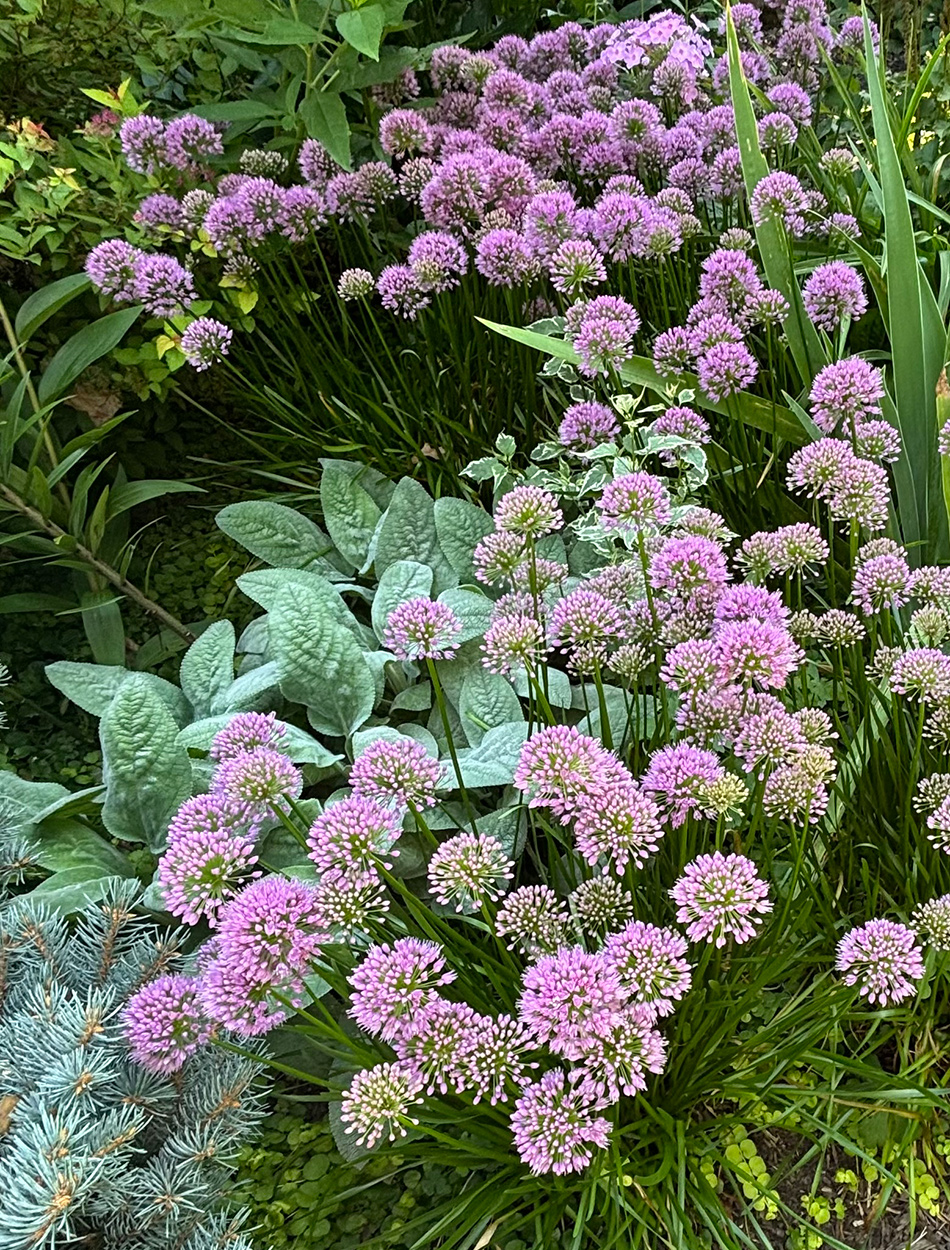 I’m trying for a riverlike drift of ‘Millenium’ allium (Allium ‘Millenium’, Zones 5–8) shown here, combined with the blue-gray of ‘Helen von Stein’ lambs’ ears (Stachys byzantina ‘Helen von Stein’, Zones 4–9), and a Globosa blue spruce (Picea pungens ‘Globosa’, Zones 2–8). The sword-shaped foliage of iris contrasts well with the rounded shape of the allium heads.
I’m trying for a riverlike drift of ‘Millenium’ allium (Allium ‘Millenium’, Zones 5–8) shown here, combined with the blue-gray of ‘Helen von Stein’ lambs’ ears (Stachys byzantina ‘Helen von Stein’, Zones 4–9), and a Globosa blue spruce (Picea pungens ‘Globosa’, Zones 2–8). The sword-shaped foliage of iris contrasts well with the rounded shape of the allium heads.
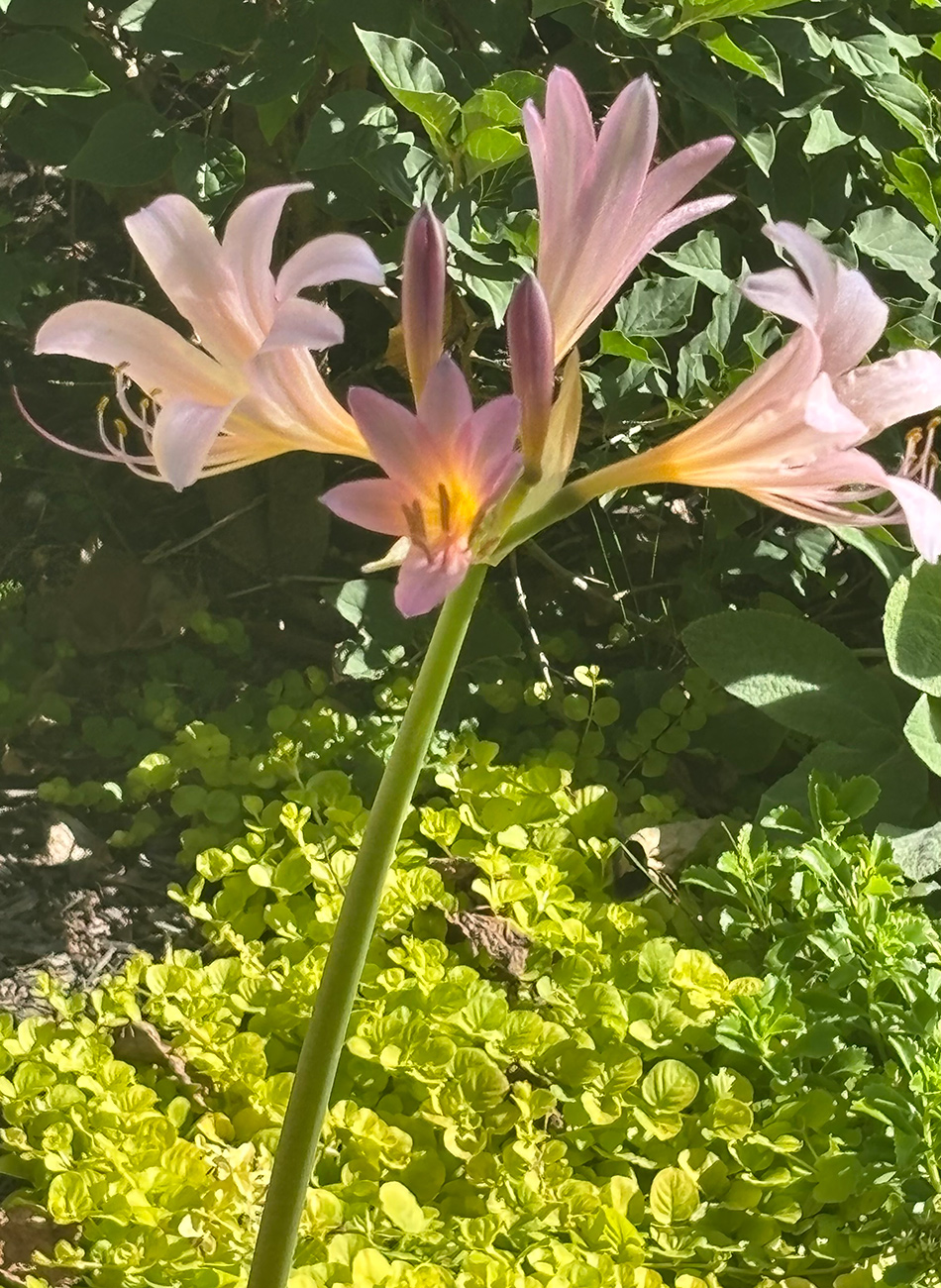 From a large mushy mass of spring foliage that thankfully disappears, a disappointing lonely, single stalk of surprise lily (Lycoris squamigera, Zones 5–9) emerges in August. It is indeed a surprise, as it appears in one day and lasts for about 10 days.
From a large mushy mass of spring foliage that thankfully disappears, a disappointing lonely, single stalk of surprise lily (Lycoris squamigera, Zones 5–9) emerges in August. It is indeed a surprise, as it appears in one day and lasts for about 10 days.
Wendy shared so many sensational scenes and captivating combinations that I have more photos to share tomorrow. Keep an eye on your inbox so you don’t miss our return to Pennsylvania for installment 2 of Wendy’s garden update.
We want to see YOUR garden!
Have photos to share? We’d love to see your garden, a particular collection of plants you love, or a wonderful garden you had the chance to visit!
To submit, send 5–10 photos to [email protected] along with some information about the plants in the pictures and where you took the photos. We’d love to hear where you are located, how long you’ve been gardening, successes you are proud of, failures you learned from, hopes for the future, favorite plants, or funny stories from your garden.
Have a mobile phone? Tag your photos on Facebook, Instagram, or Twitter with #FineGardening!
Do you receive the GPOD by email yet? Sign up here
Fine Gardening Recommended Products
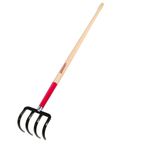
Razor-Back Potato/Refuse Hook
Fine Gardening receives a commission for items purchased through links on this site, including Amazon Associates and other affiliate advertising programs.

The Nature of Oaks: The Rich Ecology of Our Most Essential Native Trees
Fine Gardening receives a commission for items purchased through links on this site, including Amazon Associates and other affiliate advertising programs.
The Nature of Oaks reveals what is going on in oak trees month by month, highlighting the seasonal cycles of life, death, and renewal. From woodpeckers who collect and store hundreds of acorns for sustenance to the beauty of jewel caterpillars, Doug Tallamy illuminates and celebrates the wonders that occur right in our own backyards. He also shares practical advice about how to plant and care for an oak, along with information about the best oak species for your area.
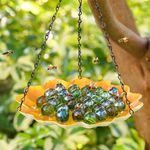
Bee Watering Station with Vivid Flower Design
Fine Gardening receives a commission for items purchased through links on this site, including Amazon Associates and other affiliate advertising programs.
Thoughtful Combo: You will receive a bee feeder and 30 glass marbles. This thoughtful combo can provide clean water for the bees, you just need to put the marbles into the bee watering station, add water (note: the water level should not exceed the height of the marbles) and hang them in the right place. The round, colored marbles can provide a place for the bees to stand and prevent them from falling into the water, effectively keeping the bees safe. Fine Material: This exquisite bee bath is made of high quality iron material, smooth surface, rust and weather resistant, not easy to fade, sturdy and reliable. Bee cups for garden can well meet the drinking water needs of lovely bees, and it can also provide food for bees, such as sugar water, nectar, etc., attracting more bees to your outdoor area and making your garden full of vitality. Perfect Size: The butterfly watering station has an overall height of 13.4 inches, a bowl diameter of 9.4 inches, and a weight of 0.44 pounds. The bee cup serves the needs of the bees well without plunging them into dangerously deep water or taking up unnecessary space in your garden, and this compact and efficient design makes it a practical addition to any outdoor space. Elegant Design: Our bee watering cups are designed in unique flower shapes with vibrant and realistic colours to attract lovely bees to your garden and patio, bee feeders for outside are not only functional but can also be used as a landscaping element, their vibrant floral patterns enhance the beauty of your garden. Multicolored Decoration: Colorful bee water stations look like flowers in a garden, flower bed or pot and attract bees and butterflies. They can drink or bathe in bee feeders, which are highly decorative and practical.


